When I published part one of this two part series on superfoods, we received so much traffic that it almost crashed our website! I guess I might have touched a nerve with this issue, which isn’t surprising to me, considering just how long we have been sold this “superfood” myth. What’s been more surprising to me is how few people have spoken out on this issue before. I always thought it was obvious, but I guess that’s a reflection of just how out-of-step I am with the natural health industry. My goal is to teach both my patients and students to become self-reliant, to develop for themselves an insightful and penetrating vision of health that allows them to see past the hype. This is why I include a strong component of patient education in my clinical practice, and was part of my motivation to found the Dogwood School of Botanical Medicine in 2012.
Years ago in my early twenties, I spent a great deal of time meditating and studying Buddhism, traveling as far away as Bodhgaya in modern-day Bihar. Like many young men, I was a determined and tenacious fellow, and at one point I seriously contemplated becoming a monk, although given my non-conformist streak I have not sure how well I would have done. It wasn’t just one experience, however, but several during my studies that brought it home that this probably wasn’t the life for me. While I was in Bodhgaya, I made friends with a Jewish-Buddhist noodle-maker from Austria who had been coming there on a regular basis for decades. We meditated together and had many discussions, and I remember one conversation wherein he described his youth, and how like me, he spent so much of his time and energy studying and practicing Buddhism. While he clearly retained his original commitment, it seemed that over time his perspective and intent had changed. “I used to want to be enlightened so badly,” he mused, “but now all I want to be is a regular schmuck”.
Which brings me back to superfoods. Yes: we are all special, and super-duper in our own way. But although each of us is comprised of stardust, and unique as an individual snowflake, the converse is also true. Our individual lives on this pale blue dot often seem to have about as much meaning as a cloud of dust, and in the end, our bodies are as fragile as a snowflake. So regardless of the superlatives, in the end we are all a bunch of schmucks, and I think the world would be a lot better place if we could all recognize this fact. So fuck the entitlements that separate us, as well as the entitlement of superfood. Just as in fostering a healthy community, our diet should reflect a natural and grounded diversity, appreciating each element for the integral part that it plays.
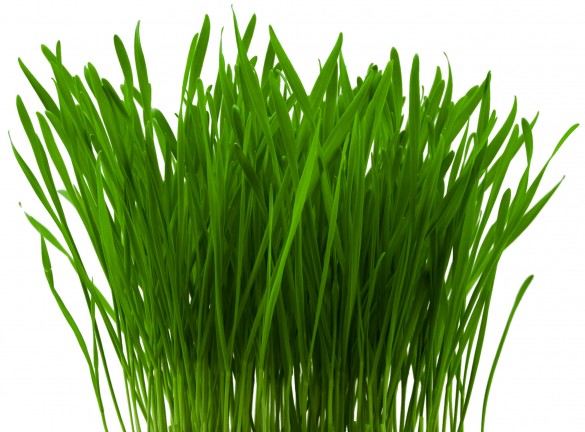
WHEATGRASS JUICE
WHAT IS IT? Wheatgrass juice refers to fresh juice extracted from the pulverized cotyledon (“seed leaf”) of the wheat plant, i.e. Triticum aestivum.
THE CLAIMS: Wheatgrass is an elixir of health, loaded with nutrients including vitamins and minerals, and supplies a complete source of protein. Wheatgrass juice also contains potent antioxidants, enzymes, and phytonutrients that protects the body against chemicals and pollutants, and helps to boost hemoglobin levels in the blood.
MY COMMENT: Wheat is an ancient food, cultivated throughout Eurasia, North Africa and the Middle East for thousands of years. We can find mention of wheat in the very earliest medical texts: in the Nei Jing Su Wen of China, in the Charaka samhita of India, in the Ebers Papyrus of Egypt, and European sources such as Dioscorides. To be sure, all of these texts speak to the properties and uses of wheat, but none describe uses for raw wheatgrass. In fact, there is no evidence of really anyone juicing and drinking wheatgrass until it was introduced by raw foodist Ann Wigmore in the 1970s.
Like all green plants, wheatgrass is rich in chlorophyll, so any supposed benefit here is not unique to wheatgrass. Wheatgrass is also stated to contain a diverse array of nutrients, including vitamins, minerals, and proteins, and to some extent this is true. Wheatgrass is loaded in B vitamins (except B12), and contains significant amounts of manganese, zinc, and iron. The protein content is also fairly well balanced, but you’d have to consume about 2 kg on a daily basis to meet your basic protein needs. Some claim that wheatgrass contains enzymes, like the intracellular antioxidant super oxide dismutase, and while I could find no evidence of this, it is entirely irrelevant anyway, because as a kind of protein, an enzyme is broken down into simple amino acids before being absorbed. As for the health claims, due to the lack of traditional knowledge on wheatgrass we have to take anecdotal reports with a grain of Himalayan pink salt, and corroborate this with the scientific research, for which there is really nothing significant. In light of this curious lack of evidence, despite its ongoing popularity, wheatgrass ranks fairly high on my bullshit meter. The fact of the matter is that wheatgrass is a grass, and humans – unlike ruminants – have never subsisted on grass as part of our traditional diet.
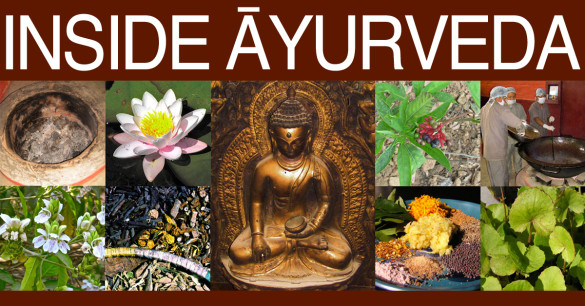
My own personal experience? Whenever I have consumed wheat grass my throat begins to close up, inducing a mild anaphylactic response – which is the only thing I have ever noted to cause this effect in me. But then again, I have a long history of hay fever, and am definitely sensitive to wheat-containing foods. And while wheatgrass doesn’t contain gluten, it does contain other constituents that appear to induce pro-inflammatory Th1-type immune responses that are over-expressed in chronic inflammatory diseases, e.g. multiple sclerosis, Hashimoto’s thyroiditis, Crohn’s/colitis, celiac disease, diabetes, rheumatoid arthritis, etc. As such, wheatgrass is hardly a good remedy for everyone, and when placed into its traditional context, becomes rather suspect and maybe even a little dangerous. One last caution relates to the fact that wheatgrass juice is usually consumed raw, and therefore may be contaminated with bacteria or molds, and so extra care should be taken when preparing it for consumption – as is the case with all raw foods.
![]()
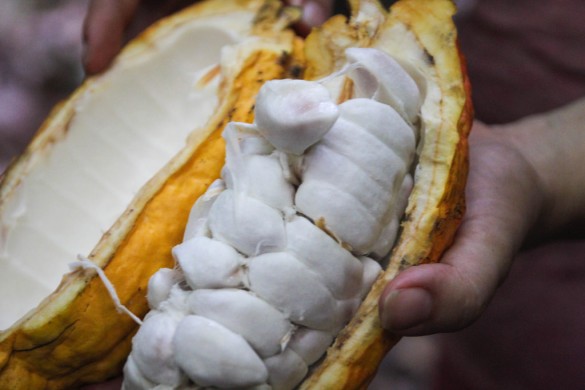
RAW CACAO
WHAT IS IT? Raw cacao, or coco, refers to the minimally processed seeds of Theobroma cacao, a tree that is native to Central America.
THE CLAIMS: Raw cacao is a superfood that is abundant in a variety of nutrients and antioxidants that help to lower blood pressure, improve circulation and benefit the cardiovascular system, as well as neutralize free radicals and improve brain function.
MY COMMENTS: The big exponent here for raw cacao is a fellow named David Wolfe, in some respect the godfather of the superfood movement, who gave a talk on chocolate (or rather, ‘ca-cao’) at a TEDx conference a few years back. While the video contains some slightly useful information, mostly it’s a lot of button-pushing that is woefully lacking in depth. For example, Wolfe’s claim that raw chocolate is loaded with “antioxidants,” a statement that ignores the fact that many of these “antioxidants” are actually toxic when consumed in large amounts, interfering with protein digestion and mineral absorption, and in many people, inducing hypersensitivity reactions. Referred to in my book Food As Medicine as “anti-nutrient factors”, these chemicals are produced in seeds by plants to discourage predation, and when we fail to account for them we suffer the repercussions, such as pellagra from corn, or celiac disease from wheat.
Not only is Mr. Wolfe’s “discovery” of plopping raw cacao beans into his smoothies predicated on a misapprehension of the science, but it flies in the face of the very Central American traditions that he purports to uphold and honor. From all the research I have done, there is absolutely no reference to the use of raw cacao beans in Central American society as a food or beverage. Like coffee, aged cheese, fine wine, and Chinese tea, cacao needs to be prepared and processed to produce its unique flavor compounds. This begins with fermenting the raw cacao beans for several days. Once properly fermented, the slimy biofilm is cleaned off and the beans are dried and gently roasted, like coffee, to kill any potential microbial pathogens and bring out the chocolate flavor. The only people that drink green coffee are those that have bought the antioxidant argument hook, line and sinker, eschewing a nice tasting brew for the false promise of super powers. Otherwise, whether it is a Light City or a French roast, coffee is roasted so it actually tastes like coffee. Thus, if your supposedly “raw cacao” tastes like chocolate, it mostly definitely has been fermented and roasted in some fashion, and isn’t actually raw at all. However, it is possible that some producers may not be adequately roasting their cacao to make some kind of attempt at being raw, in which case, the beans may be contaminated with microbes acquired during fermentation, including Staphylococcus, E. coli, Salmonella, Aspergillus, etc.
In the end, “raw cacao” appears to be nothing more than a marketing device to capitalize on all the people that bought into the raw food movement sold to you by people like Mr. Wolfe. As for the benefits of chocolate generally? Yes, in small amounts, like tea and coffee, chocolate may provide some health benefits, but I think much of this is overblown. The reason we consume chocolate is because we like it – how complicated does it need to get? But in those folks that have a sensitivity to cereals or are otherwise gluten-intolerant, chocolate is probably best avoided if you continue to experience gut or joint issues. Same with coffee.
![]()

VEGAN PROTEIN POWDER
WHAT IS IT? Vegan protein powder refers to a proprietary mixture of protein-rich, plant-based ingredients derived from the seeds of various cereals and legumes, including pea, hemp, pumpkin, alfalfa, sunflower, brown rice, amaranth, quinoa, millet, buckwheat, garbanzo, kidney, lentil, adzuki, chia, sesame, flax, and cranberry.
THE CLAIMS: Vegan protein powder is an easy-to-digest and hypoallergenic source of plant-based protein that provides a full complement of essential amino acids that can be used to replace other soures of protein in the diet.
MY COMMENTS: About 25-30 years ago protein powders were the lonely preserve of bodybuilders, who rationalized its use to boost the protein content of their diet, thinking that this could prevent muscle loss and enhance recovery after exercise. In fact, the bodybuilders were the original smoothie drinkers, experimenting over this time not just with protein powder, but a huge variety of supplements such as creatine and glutamine, as well as drugs such as ephedrine and tamoxifen. Like obsessive alchemists in search of body “gold”, some bodybuilders would literally try anything to gain that extra striation of muscle, to make those veins pop just a little bit more. But while supplements come and go, protein powder has always formed the mainstay of bodybuilding, and it was its devoted legions over the years that eventually brought it to the mainstream. Now, pounding powdered protein is more a fashion statement, an accessory to let your Instagram fans know just how serious you are about getting fit and healthy. “Look everyone, what I sacrifice for good health!” I guess its not too bad – strawberry sort of goes with kale, flax oil, and green pea isolate. Or maybe not…
The thing is, pounding down more protein isn’t necessarily a good idea. Apart perhaps from its “technical” use in athletics and bodybuilding, there is no body of research telling people living in industrialized nations that we need dramatically more protein in our diet. Unless of course you are a vegan, in which case getting sufficient protein in your diet becomes a huge issue no matter where you live. Most bodybuilders generally think that whey protein is superior to any other type of powdered protein, but if you’re a vegan, or if you believe that you need to switch out animal protein for vegetable protein, then plant-based protein powders might make sense. But there are problems with them, primary of which is how they are typically consumed, i.e. in a cold smoothie, which I have already described in part one as being hard to digest. Improperly digested protein leads to bacterial protein putrefaction, which explains one of the reasons folks often feel so “farty” on protein powder. But this effect is also due to the fact that many of the plant-protein sources are inherently harder to digest, and despite the nutritional claims on the label, contain unaccounted-for antinutrient factors that impair protein digestion and mineral absorption. This alone invalidates the claim that these vegan protein powders are ‘hypoallergenic’, as many many allergies are predicated on eating foods that induce a background hypersensitivity. Raw vegan protein powders are the worst offenders here, because although slightly germinated cereals, legumes, or seeds are slightly more digestible, this process is insufficient to effectively detoxify and breakdown the antinutrient factors contained within them. Has any culture in the history of the world ever eaten slightly germinated, uncooked cereals or legumes as a staple food? No! Like all raw food, raw vegan protein also contains an inherent risk of food borne illness, which is exactly what happened recently when 12 people acquired a Salmonella infection from eating a raw vegan protein powder.
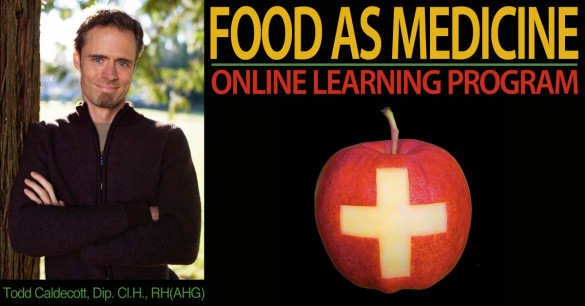
In contrast to the use of hemp seed, which was traditionally eaten as a minor food, some sources of vegan protein powders such as cranberry seed are entirely novel. My cynical mind tells me that all the fuss over cranberry protein’s “antioxidant” benefits is just the cranberry juice industry trying to create a new market for what is actually a by-product. A seemingly better choice among the various vegan protein powders is pea protein isolate, which far from being raw or even “natural,” is a highly processed protein-rich extract derived from the common pea (Pisum sativum). I have also written on this before, and while pea protein isolate appears to be safe, the processing methods used don’t necesarily deal with all the potential sensitizers and allergens in pea, and may in fact concentrate some of them in the process. Consider the fact, for example, that we’ve only recently discovered that soy protein isolate, now found in a huge variety of consumer food products, is linked with an increase in risk of breast cancer. To be sure, dried peas have been a staple food in West Asia, North Africa and Europe for thouands of years, but it was always prepared as a cooked food – such as a flavorful soup or a dahl – not as a finely milled powder. Beyond any potential health issues with pea protein isolate, and plant-based protein powders as a category, I guess it just seems a little sad to me, and is further evidence of our societal disconnect with food. Sigh.
![]()
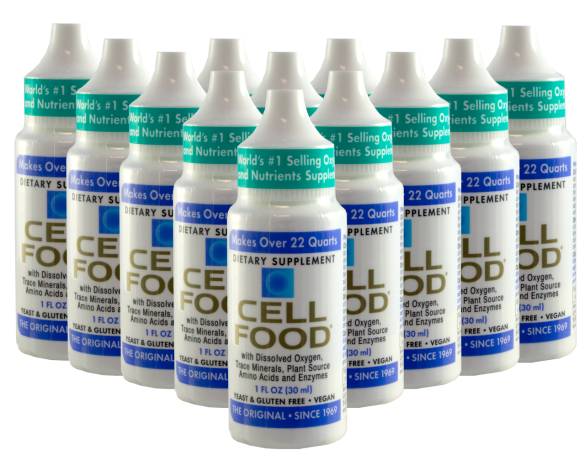
DEUTERIUM SULFATE (AKA CELLFOOD)
WHAT IS IT? Deuterium sulfate is the chief ingredient in a line of health care products marketed under the name “Cellfood”, which also contains an ionic “trace mineral” blend, a “trace enzyme” blend, and a “trace amino acid” blend.
THE CLAIMS: Cellfood is an oxygen and nutrient supplement that delivers oxygen to the body at the cellular level, scavenging free radicals, detoxifying the body, and providing a wide array of plant-sourced trace minerals, enzymes and amino acids in colloidal form.
MY COMMENT: Where should I start? How about at the end, with Cellfood’s supposed “trace enzyme” and “trace amino acid” blend. In nutritional science we use the term “trace minerals” with reference to the fact that we need these minerals, such as iodine and manganese, in very small amounts. But amino acids are macronutrients, i.e. we need them in very large amounts to supply our bodies with the energy and substrate required to maintain homeostasis. Amino acids might be found in trace amounts in certain foods, say like wheatgrass, but this doesn’t make “trace amino acids” a thing. Similarly, there are no trace enzymes, because unless we’re talking about vitamins as co-factors, there are no enzymes that are required for human health. As for trace minerals, I have no issue with this per se, and sometimes I recommend ionic supplements for people whose diet, or environment (e.g. the Pacific Northwest) might be lacking a full complement of trace minerals. More often, however, I have folks make up bone soup with a handful of mineral-rich herbs such as seaweed and nettle, and vegetable trimmings that would otherwise be composted.
As for the primary ingredient in Cellfood, i.e. deuterium sulfate, this is where things get wacky. Deuterium is one of two stable isotopes of hydrogen, in which the nucleus of deuterium (called a deuteron), contains one proton and one neutron, whereas the more common hydrogen isotope (called protium), has no neutron in the nucleus. Deuterium is actually quite rare in nature, only one out of 6400 hydrogen atoms, and since its discovery in 1931, has been used by nuclear engineers as a neutron moderator, to sustain nuclear chain reactions. And indeed, it appears that the supposed discoverer of the therapeutic benefits of deuterium sulfate, a man named Everett L. Storey, had something of a connection to the nuclear industry himself, with websites promoting Cellfood claiming that Mr. Storey invented the triggering mechanism for the atomic bomb, was awarded a Nobel prize twice for his work, and was lauded by Albert Einstein as a “genius”. In contrast to these claims, however, his obituary is rather more pedestrian, mentioning nothing about his supposed career as a scientist or Nobel prizes, noting instead that he “claimed” to have invented a game that inspired the creation of the hydrogen bomb. The level of spin and BS on this product is really quite something!
But what exactly is deuterium sulfate? Well, considering that deuterium exhibits many of the same chemical properties as regular hydrogen, deuterium sulfate is a variant of hydrogen sulfate (H2SO4), i.e. D2SO4, the primary ingredient in drain cleaner, used in the manufacture of phosphate fertilizers, and as an electrolyte in lead-acid batteries. As for the claim that Cellfood “oxygenates” the body as a way to deal with free-radicals and disease, it is the height of irrationality to suggest that an oxidizing substance, i.e. oxygen(!), also serves as an antioxidant. Yes, the body requires oxygen to produce energy, but this also generates potent free-radicals such as superoxide in the process. Once released into the cell, this highly reactive free radical creates a world of chaos that results in tissue damage, forcing the body to synthesize a protein antioxidant called superoxide dismutase to mop up as much it as possible. While oxygen is an efficient means to produce cellular energy, our body’s reliance upon it comes at a cost, called oxidative stress, placing inherent limitations upon health and longevity. If the oxidative stress theory of disease has any merit, it cannot be that consuming or imbibing more oxygen is the cure.
![]()
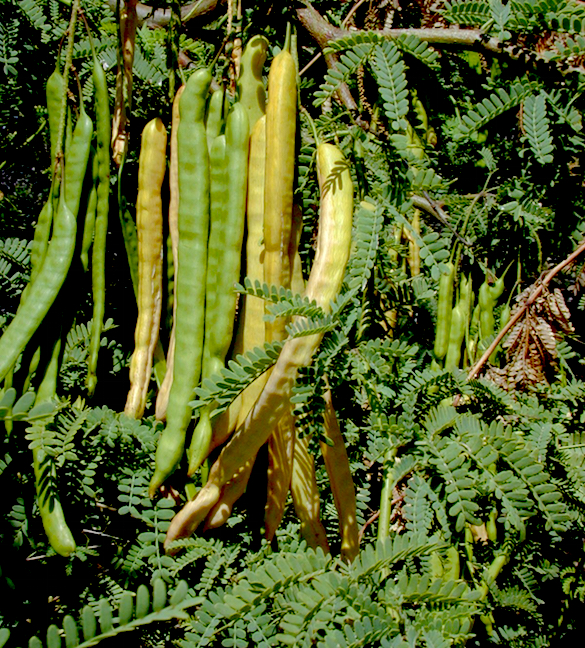
MESQUITE POWDER
WHAT IS IT? Mesquite powder, also known as algarrobo, refers to the powdered legume pods that grow on the thorny Mesquite tree (Prosopis pallida) that is native to Colombia, Ecuador and Peru.
THE CLAIMS: Mesquite powder is a staple food in the traditional diet of Peru that is rich in protein and minerals, with a low glycemic index that makes it effective to help balance blood sugar and control diabetes.
MY COMMENTS: The pods of the Mesquite tree have been eaten by humans for thousands of years, with the earliest recorded evidence of its consumption uncovered in the Tehuacan valley of Mexico, dating from about 6500 BCE. Important as one of the few tree species that can survive in desert regions, the Mesquite tree is considered to be a threatened species in South America, and while it is grown extensively in other regions, one should make sure to source it with care.
Traditionally, the raw algarrobo pods are chewed as a snack by indigenous peoples, and dried in the sun and pounded with stones to make a coarse flour. The algarrobo pod has an exceptionally sweet taste, and when reduced to a flour, is traditionally used to make a sweet drink called ‘añapa’ or ‘yupisin’ that can also be made into a fermented beverage. Contrary to the low glycemic claim of superfood marketers, however, Mesquite pods actually contain about 45% soluble sugars, most of it in the form of sucrose. This means that it should definitely be avoided if you suffer from hypoglycemia or diabetes. Contrary to the claim as well that algarrobo powder is super-packed with nutrients, the whole pods only contain about 5-10% protein, with appreciable amounts of potassium, small amounts of calcium, magnesium and iron, and <enter the crickets> not much else to write home about.
So am I down on algarrobo? No, I actually think it’s pretty cool as an exotic alternative sweetener for occasional use in baked goods, but only once we separate fact from superfood marketing fiction. If promoters continue to make ridiculous health claims about its effect on blood sugar, however, I expect that we might see a class action lawsuit for this “superfood” too. Smarten up, fellas!
![]()
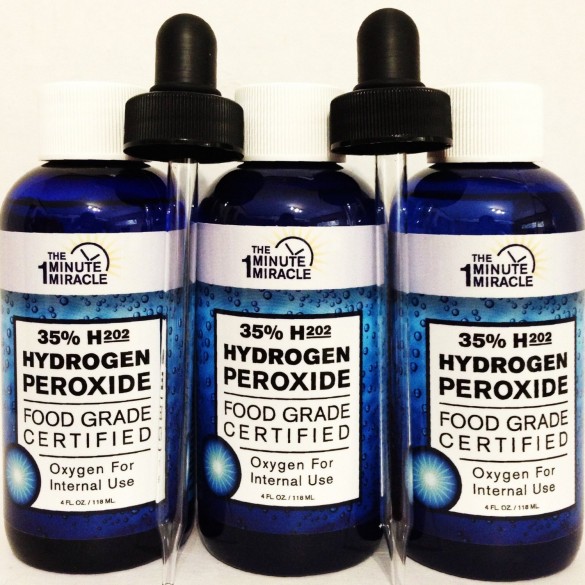
HYDROGEN PEROXIDE
WHAT IS IT? Hydrogen peroxide (H2O2) is a pale-blue liquid that upon cursory examination appears to be very similar to water (H2O), but in actuality displays chemical properties that make it very, very different.
THE CLAIMS: Hydrogen peroxide is a natural substance that occurs in rainwater and in the body, and when consumed in “food grade” form, it oxygenates the body and is thus effective in the treatment of everything from allergies and altitude sickness, to diabetes and cancer.
MY COMMENTS: Hydrogen peroxide (H2O2) is a simple peroxide, a term used to describe a compound that displays a weak oxygen–oxygen single bond that can be easily cleaved, resulting in the formation of a highly reactive hydroxyl radical. Due to its reactivity, hydrogen peroxide is used industrially as a bleaching agent and disinfectant, and while small amounts of hydrogen peroxide do occur naturally in rain and sea water, most environmental H2O2 is an anthropogenic air pollutant that has been show to cause adverse effects on plants and human health. Within the body, hydrogen peroxide is an intermediate compound synthesized from the superoxide radicals generated during metabolism by the antioxidant enzyme superoxide dismutase. In this form, hydrogen peroxide is less reactive than superoxide, but in the presence of ultraviolet light or by interacting with metal ions such as iron, it is converted into the highly reactive hydroxyl radical, resulting in oxidative stress. The over-production of H2O2 is a primary factor in the oxidative stress theory of disease and aging, evidenced by the fact that the body maintains a vast armamentarium of enzymes such as catalases and peroxidases to deactivate it.
Despite its inherent toxicity, the body does use H2O2 to some advantage, for example, when released by white blood cells to kill engulfed bacteria, although this also causes some degree of tissue damage and inflammation. Recent research has also indicated that in very small amounts H2O2 functions as a signaling molecule to fine-tune healthy cell function. But despite these benefits, it doesn’t change the fact that H2O2 remains widely regarded as a cellular toxin, and in consideration of this, it makes no sense to consume it internally. It would be one thing if hydrogen peroxide had a long history of use, but hydrogen peroxide as a therapeutic agent is a 20th century phenomena – and a very obscure one at that. And while 3% hydrogen peroxide is easily available in pharmacies for external use as an antiseptic, advocates for H2O2 ingestion recommend a “food grade” hydrogen peroxide that has an inexplicably high concentration of 35%, used in drop doses mixed with distilled water.
Like Cellfood, the use of H2O2 is predicated on the belief that it is a lack of oxygen that causes disease, and if we can just somehow drive more oxygen into us that we can live for ever. But hopefully now, after reading this and my comments for Cellfood, you can appreciate just how irrational this argument is. Even if H2O2 maintains some important and beneficial biological activities, the body has absolutely no problem producing an excess of it, so why should we ever think to consume more?
![]()
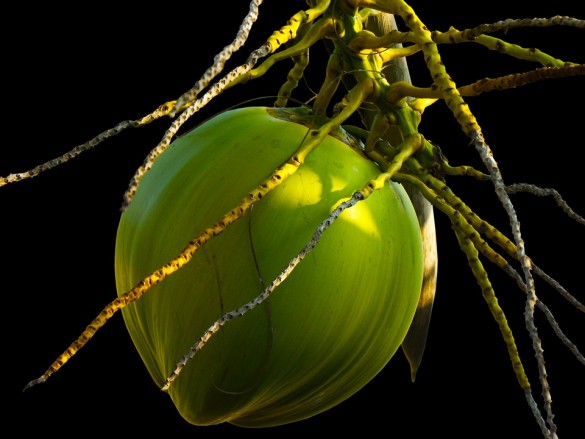
COCONUT WATER
WHAT IS IT? Coconut water is a clear liquid found within the immature fruit of the coconut tree (Cocos nucifera), which suspends the developing endosperm until it gradually matures as the fleshy white coconut “meat”.
THE CLAIMS: Coconut water is an all-natural, low calorie beverage that is rich in electrolytes, minerals, and antioxidants, that promotes hydration, weight loss, and good digestion.
MY COMMENTS: Coconut and coconut water is widely used as a food and beverage throughout the tropics, and is mentioned in the very earliest of texts on Ayurveda. In India, coconut water is widely used to support hydration, providing a balance of sugars and electrolytes in a sterile solution. In a country where poverty is rampant and clean water a challenge, fresh local coconut water provides significant advantage over oral rehydration packets that require the use of purified water. In Ayurveda, coconut water is considered to be cool in energy and reduces pitta, used therapeutically to treat dehydration, thirst, bladder disorders, and diarrhea, and applied topically for skin irritation. Given too that it resembles the shape of a head (as well as being a euphemism for such), there is a folk belief that the coconut water is analogous to the fluids that nourish and protect the brain, and hence the suggestion that consuming it benefits the mind. When I travel to the tropics, enjoying fresh coconut water and the delicious jelly is usually high on my agenda, as it is a good way to cool the body and rehydrate when suddenly exposed to the tropical heat.
Nowadays of course, you don’t need to visit the tropics to indulge in coconut water, as it can literally be found almost everywhere, sold as a healthy alternative to soft drinks and fruit juice. The problem is that bottled coconut water is not fresh coconut water – it is pasteurized, and thus heat-treated – which denatures the product’s quality and flavor significantly. Worse still is the coconut water sold in tetrapaks or cans, from which components of the container such as plastics and dyes leach into the food. Of course, you can also buy imported immature green coconuts now and extract the fresh juice yourself with your own machete, but as you wield your cutlass consider the carbon footprint involved in importing a whole green coconut. You wouldn’t think to eat fresh raspberries when you’re in Fiji, so why think to drink coconut water when you’re in Michigan or Alberta? Coconut water is a great local food, and personally, I’d like to see it stay that way. Besides which, the claims made by promoters for their bottled products are over the top, which is the reason why manufacturer Vita Coco was successfully slapped with a class-action lawsuit in 2012.
![]()
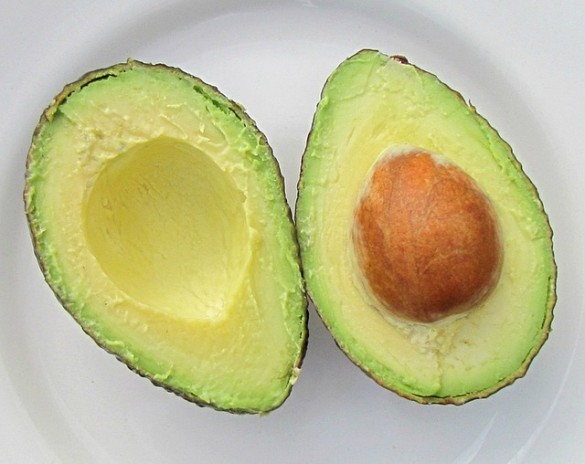
AVOCADO PIT
WHAT IS IT? Avocado pit refers to the hard, woody fruit enclosed in the fatty mesocarp of the Avocado tree (Persea americana), native to Central America, but now cultivated in tropical regions all over the world.
THE CLAIMS: Avocado pit is rich in antioxidants that decrease inflammation, lower high serum cholesterol levels, and prevent heart disease and stroke. Avocado pit also benefits digestive disorders such as ulcer, constipation and diarrhea, prevents and reduces tumor growth, boosts the immune system, alleviates arthritis, promotes weight loss, and reduces exercise-induced asthma.
MY COMMENTS: Wow, what is avocado pit not good for? The problem is, however, that all of these claims are entirely fabricated, a product of wishful thinking that has no basis in traditional medicine nor the science. Like “raw cacao”, the purported benefits of avocado pit are an inference based on the fact that it contains antioxidants, which I have already established, are a double-edged sword that cause problems when consumed in significant amounts. I could go on at great length, but as I have already written on the subject of the avocado pit, I suggest you check it out. Besides the questionable benefit of these “antioxidants,” avocado pit also contains trypsin inhibitors that interfere with protein digestion, as well as small amounts of hydrocyanic acid and cyanogenic glycosides – both of which are toxic. Does avocado pit still sound like a superfood to you?
![]()
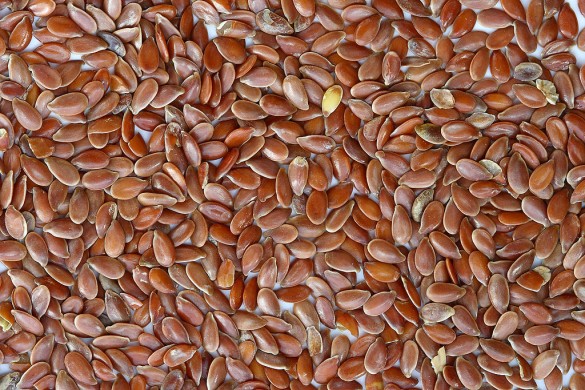
FLAX OIL
WHAT IS IT? Flax oil is the expressed oil from the seed of the flax plant (Linum usitatissimum), native to Caucasus regions, and now grown all over the world.
THE CLAIMS: Flax oil is rich in healthful, antiinflammatory omega 3 fatty acids, and regular consumption reduces the risk of diseases marked by inflammation, including heart disease, arthritis and cancer.
MY COMMENTS: Like other seeds such as chia and hemp, flax is rich in the polyunsaturated fatty acids (PUFAs) alpha-linolenic acid (omega 3) and alpha-linoleic acid (omega 6), with a ratio of about 4:1 in favor of omega 3. All told, these PUFAs account for about 70% of the lipid content of flax, and given the inherent instability of PUFAs, the recommendation to consume flax oil is entirely misplaced. Like the avocado pit, I have written about flax oil before, but suffice it to say that flax oil has never been a significant part of the human diet, even in regions where flax was grown. While making it unsuitable for consumption, the inherent instability of the PUFAs in flax oil means that it is an excellent drying oil, useful in woodworking as a varnish, as a base for paints, and to soften and condition leather. I use flax oil to season my cast iron pans, because with heat it rapidly polymerizes to form a kind of organic plastic that serves as a foundation for the thin layers of hardened carbon that gradually build up onto the pan to provide a non-stick surface. But the fact that flax oil is a drying oil that polymerizes very quickly is exactly the reason you don’t want to eat it. Instead, source your omega 3 fatty acids in whole food, such as pasture-raised meat and wild fish, where they are protected – unlike flax, hemp and chia – by cholesterol, saturated fatty acids, and monosaturated fatty acids that resist lipid peroxidation. At the same time, make sure to avoid omega-6 fatty acid-rich sources, including corn oil, safflower oil, sunflower oil, peanut oil, etc., as well as feed lot meat and farmed fish.
![]()
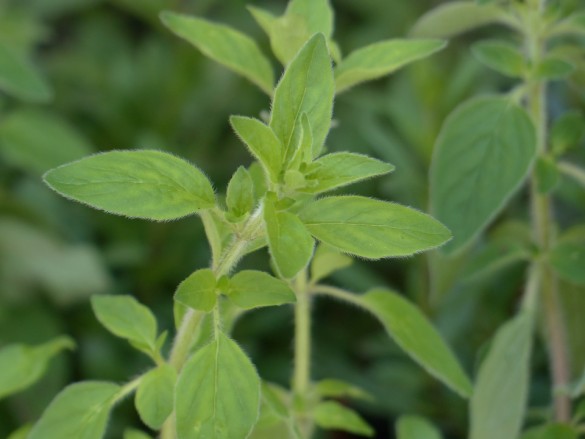
OREGANO OIL
WHAT IS IT? Oregano oil is the distilled essential oil obtained from the Oregano plant (Origanum vulgare), native to the Mediterranean and Western Asia, now cultivated all over the world.
THE CLAIMS: Oregano oil is an effective remedy for a large number of health issues including respiratory problems, digestive problems, fungal infections, cold sores, arthritis, and dandruff, and is an effective insect repellent.
MY COMMENTS: Oregano has been used for thousands of years, mentioned by Hippocrates and Dioscorides as a common culinary and medicinal herb that imparted a warming, stimulating energy, uses included the treatment of convulsion, edema, psoriasis, jaundice, tonsillitis, oral thrush, and ear infection. Like a number of other aromatic herbs, Oregano was used as a “strewing herb” in medieval Europe, thrown on the floor to keep the pestilence at bay, also lending support to its use as an insecticide. So unlike many of the “superfoods” I have reviewed in this series, Oregano actually has a strong basis in traditional medicine.
Oregano is a member of the Laminacea, or mint family, displaying a unique fingerprint of common essential oil constituents such as carvacrol and thymol, that are also found in related members of this family such as Wild Bergamot (Monarda fistulosa) and Thyme (Thymus vulgaris). As such, if we based the rationale of its use entirely upon its essential oil, there is nothing particularly special about Oregano that would necessarily warrant its use over something else like Wild Bergamot or Thyme. The fact however, that I am only referring to the essential oil is part of the problem. This is because once separated from the plant material by distillation, an essential oil is a highly purified plant extract that can be exceptionally powerful in action. Depending on the amount of essential oil found in various herbs, an essential oil can represent an extraction strength that is hundreds and even thousands of times more powerful than the crude herb. It is for this reason that you need to be very careful with ingesting almost any essential oil, and, why almost all of the Oregano oil in the market place is heavily diluted with some kind of carrier oil. Pure oregano oil, and other purified essential oils such as Thyme oil, are so powerful than when applied to the skin they can result in deep, penetrating chemical burns. The problem is that when you buy your Oregano oil, the bottle doesn’t necessarily tell you the dilution factor, so you don’t know what you’re getting. Given the business model, you will probably get less as opposed to more of the essential oil, but that’s not very good either when you need to be concerned about efficacy.
But honestly, you probably don’t need Oregano oil for most applications if you have good quality oregano herb. It’s super easy to grow, readily available and abundant, and unlike the essential oil, very safe – exactly the way nature intended you to use it.
![]()
Thanks for reading. If you have any additional questions about other so-called “superfoods,” feel free to ask in the comment section below.
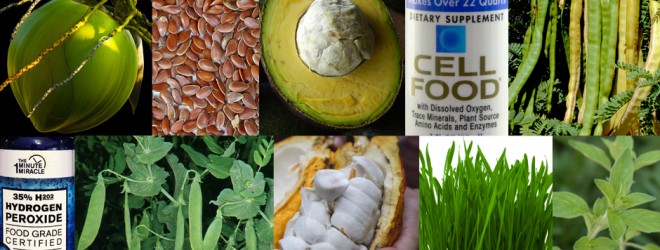
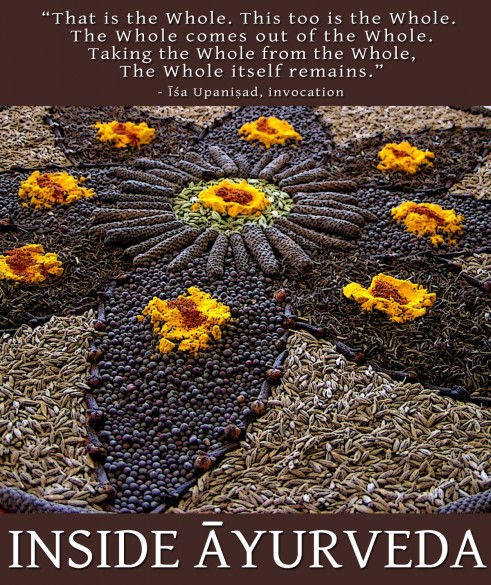

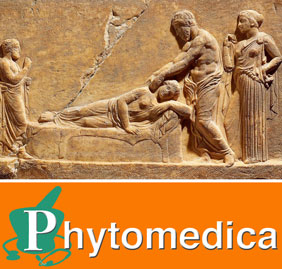
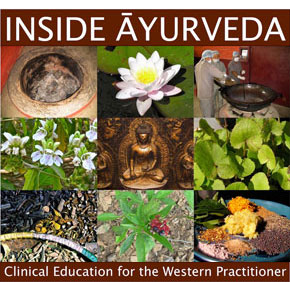
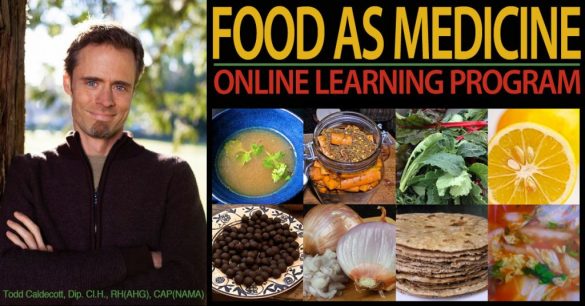
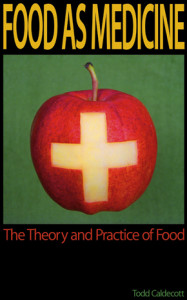
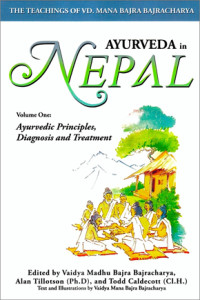
Thank you so much for taking the time to report on all these so called super foods! I would like to know about Hydrolyzed Collegen Peptides. It is sold as a protein powder sourced from organic grass fed cows and claims to heal digestive lining from leaky gut. Many Thanks!
Why not just consume the bone soup? It is cheaper, and probably more effective.
why not leave poor animals bones in their own bodies !!! ???
Well, bones of no-longer-alive animals, of course. Sure, you can leave the critters alone, whence their tissues become food for other living things and the bones in time turn to dust and the minerals become a part of plant food supply. One way or another, you get the mineral nutrients, but if you have acute deficiencies, you can short-circuit the cycle a bit. You yourself are a part of that re-cycle too.
good article on superfoods !
are there any you DO recommend ?
Wow, what a sobering article. I really appreciate this.
I’m very curious about the whole PROBIOTICS subject.
Also, mineral supplements.
In a nutshell, supplemental probiotics are suspect due to shed life issues, but the virtues of live culture foods you make at home is not, e.g. this video on how to make your own. As for mineral supplements, many of these are inorganic metals sourced from industry as by-products, and haven’t been processed for proper absorption. Once again, the essentiality of minerals isn’t in question, but the best place to get them is in healthy food, e.g. bone broths, sea vegetables, culinary herbs, leafy greens, etc. These are subjects we cover in detail in the Food As Medicine online program.
This is a wonderful set of articles. I am interested on your thoughts on the claims of serrapeptase and nattokinase to prevent heart attacks and eliminate scar tissue in the body.
I had a dessert a few years back with raw caco and agave. Within an hour I was very ill. Later realized it had been a gall bladder attack. Ferreted out an old email I vaguely remembered about the dangers of raw cacao. Apparently Jeremy Saffaron perhaps the first advocate who first promoted in the U.S. backpeddled and began educating about the toxicity of raw cacao. http://www.living-foods.com/articles/toxiccacao.html
Thanks for the great information, just wanted to add that I have recently come across that peas, alongside wheat, are being harvested using roundup to speed the drying process. Scary considering the glycosphate and it’s actions.
I am just blown away by all the hype and misinformation that is feed into our food system.
Hi, thanks for you information!
I send you one recent paper of Oregano Oil of, its very good specie! http://www.hindawi.com/journals/omcl/2016/1404505/
Right on! I appreciate these candid and informative posts.
Hello Todd,
While I like your taking “superfoods” to task, I have some comments about hydrogen peroxide.
First, I would not consider it a food at all. Also it is colorless, not blue. The 3% solution available in many stores contains preservatives, while the 35% does not, which is probably the main reason it is used orally at a dilution down to about 3%. Some scientists have used the work of Otto Warburg to treat cancer with H2O2 (and also ozone O3), which apparently has some merit. Certainly both H2O2 and O3 deserve attention in the age of failing (and toxic) antibiotics.
Hi Tom
With regard to color:
“Pure hydrogen peroxide is a clear, syrupy liquid, colourless in small amounts, but having a bluish colour like water when in bulk”
http://chemistry.proteincrystallography.org/article144.html
“Appearance: Very light blue color; colorless in solution ”
https://en.wikipedia.org/wiki/Hydrogen_peroxide
As to the reason why it was included under “superfoods” is because people consume supposedly “FOOD GRADE” hydrogen peroxide. Otherwise, I would agree it is not a food. Beyond this, there is no evidence to support any of your statements that it is useful in cancer or infection when take internally.
Hi Todd,
What’s your opinion of pure marine phytoplankton?
On a gram per gram basis, it is a very, very expensive way of getting your nutrition. The real benefit are the EFAs, which you can easily get in many other foods. And it is stealing food from whales! What about the whales, Mike? It’s not like they’re climbing up on shore and taking a bite out of your hotdog. Most published studies predict that phytoplankton levels are in decline and are likely to continue with climate change.
Heard you on KSFR, yesterday, Todd, and, as a vegetarian for almost 20 years I was listening very closely. Today I replayed your show from last week as well, and then found my way to your website where I have read your two articles on superfoods, another subject that is hitting home. I have been using a product called Vitamineral Green by Health Force Nutritionals (https://healthforce.com/superfoods-rejuvenation/vitamineral-green) in smoothies with almond milk and frozen fruit for years, generally bananas. Are you aware of this product? I would appreciate your review of it! Thanks!
Not aware of this product specifically, but I took a look at it. While there are no red flags, I have questions about the viability of the probiotics (as most are probably dead), and I am not a big fan of spirulina. Many of the herbs are ones that I use in my practice as herbal teas. Ultimately, the issue is one of cost – this is a very expensive way to get common place herbs likes Nettle into your daily regimen, and the impact of taking this product at the recommended dose is likely to be negligible, at least with regard to your over-all nutritional status.
What do you think of congee, Todd?
Congee is very good for weak digestion, and can be made from many different types of cereals depending on the need… but white rice congee is probably too refined for regular consumption in healthy people, and will likely lead to metabolic issues due to the high carb content.
Curious what you would suggest re Omega 3-6 foods for vegetarians if you’re not into algae or flax, hemp and chia? Thanks
I’ve met a number of dancers (hippie-dancers, dare I generalize), who are putting tsp of diatomaceous earth in their water once or so a day, to help with tendons, joint health, etc. Comments? Thank you!